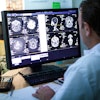Inpatient diagnostic imaging improves patient outcomes in hospitals that make greater use of the technology, without significantly affecting costs, according to a new study published in the November issue of the Journal of the American College of Radiology.
The study analyzed 1.1 million inpatient admissions at 102 U.S. hospitals during 2007 to explore the connection between the use of diagnostic imaging and patient mortality and costs. Lead authors on the study were David Lee, Ph.D., senior director of health economics and outcome research at GE Healthcare of Chalfont St. Giles, U.K., (which sponsored the project) and David Foster, Ph.D., of Ann Arbor, MI-based Thomson Reuters, which supplied the database for the study (JACR, November 2009, Vol. 6:11, pp. 780-785).
Lee and Foster constructed two hospital-specific, risk-adjusted imaging utilization measures for CT, MR, ultrasound, and radiography. The first measured whether a patient received a service during an admission, and the second estimated the mean number of services the patient had received. The study included all clinical conditions treated in hospital for patients with a range of insurance coverage.
The study found an inverse and statistically significant correlation between the risk-adjusted probability that an imaging service would be used and risk-adjusted mortality for all four imaging modalities studied.
Impact of imaging modality on hospital mortality
|
"In other words, hospitals at which patients were more likely to receive imaging services had lower mortality, and vice versa, after controlling for patient and hospital characteristics," they wrote. "Our results suggest that performing imaging on more patients may improve outcomes."
Lee and Foster conceded that there could be other factors in the connection between imaging and better patient outcomes, writing that hospitals that are more likely to image patients could be more likely to attract better-quality physicians and staff members, use better quality control systems, or have better facilities, any of which could improve patient outcomes or make care more efficient and less costly.
Related Reading
Flawed MedPAC survey drives debate on imaging payment cuts, August 11, 2009
Medicare's equipment utilization rate: What it means for radiologists, July 14, 2009
CMS pitches 90% use rate in proposed 2010 MPFS rule, July 1, 2009
Radiology rallies to fight more reimbursement cuts, July 1, 2009
ACR lobbies against RBMs, utilization rate changes, June 26, 2009
Copyright © 2009 AuntMinnie.com



















